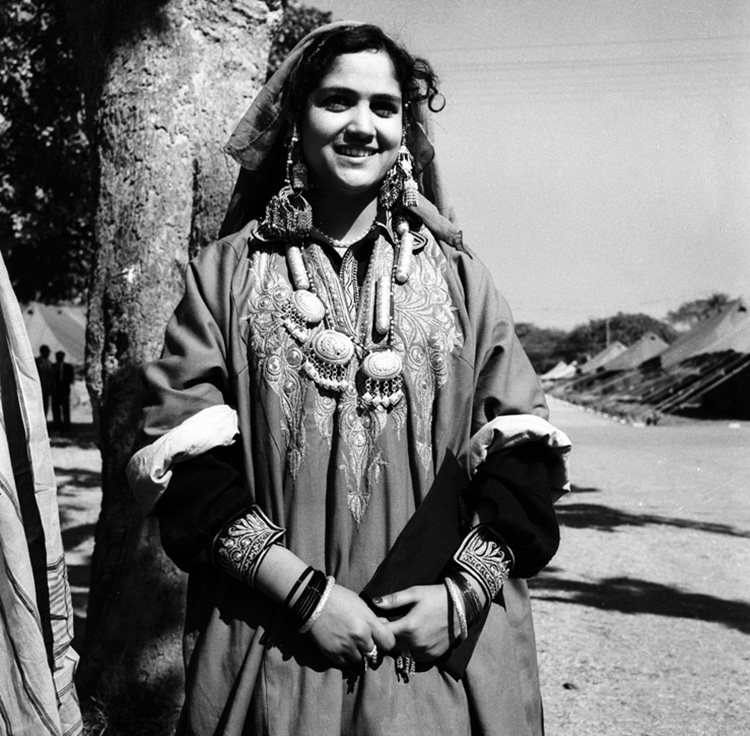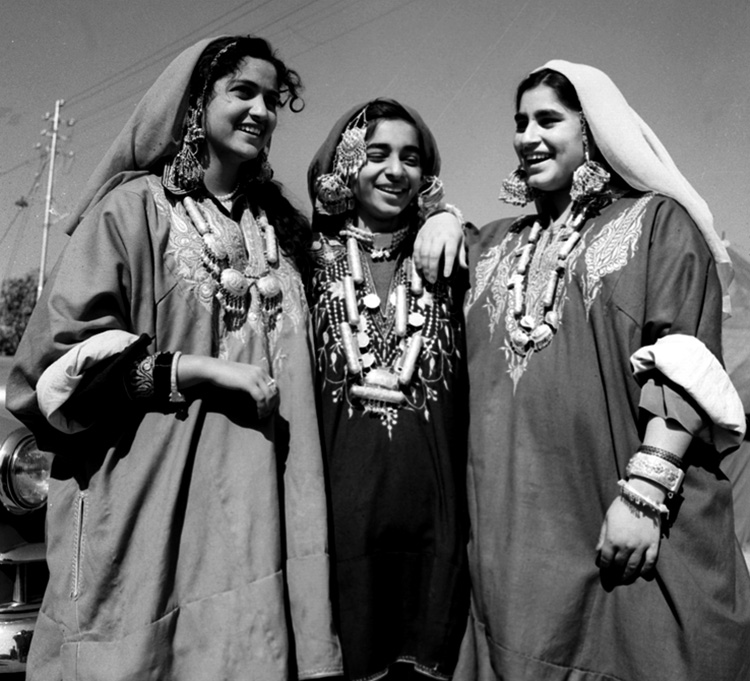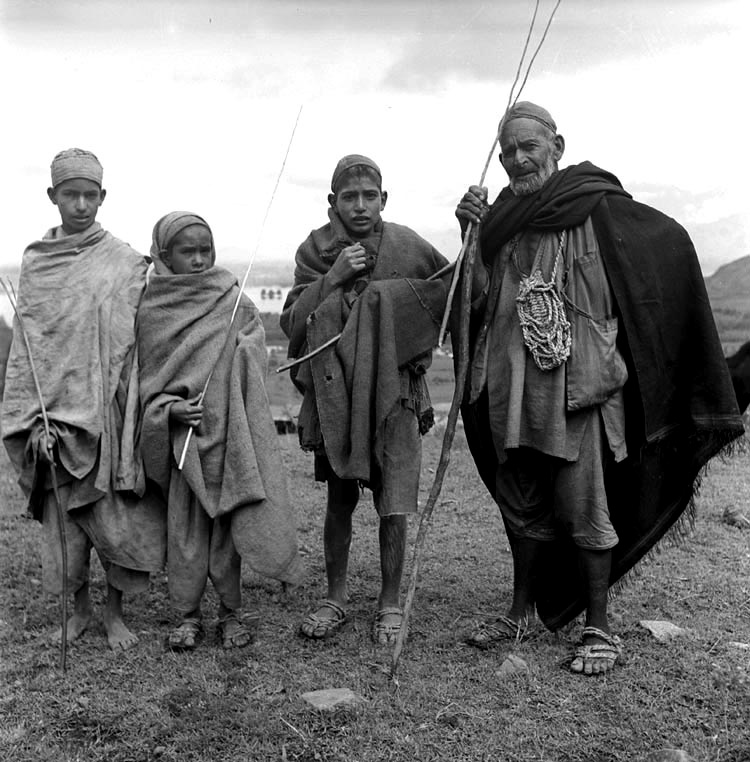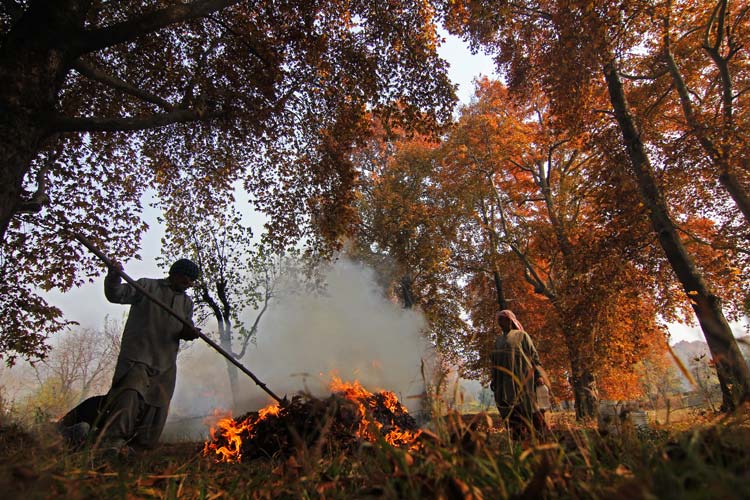People talking about Kashmir are so ignorant about the place that they presume most of nearly seven million people inhabiting the vale are dependent on off-shore charity for survival, wonders Masood Hussain

During the amorphous era of militancy in 1990, when a huge posse of CRPF raided a vast belt in city’s crowded Chotta Bazaar on January 19, post-raid allegations were not limited to marshalling of youth and arrests alone. There were instances of plunder and one action invariably found in every home: CRPF had mixed rice with spices, sand and dirt. They had damaged most of the beddings as well.
Protests apart, these actions remained the hallmark of many such raids across the city and the periphery. Everywhere the allegations started coming in that CRPF was damaging the grain storage and beds. The answer to this came only around summer. The CRPF men were getting panicky when they would see huge stores of grains and provisions in every home. Basically, from a background in which people would hardly keep so much of stocks, they were presuming all this stock was either for a longer war or for militants. In case of footwear and the beddings, they were sure; it has been kept ready for militants.
Governor G C Saxena’s administration took its own time in understanding the issue that was reported almost on daily basis. Much later, the top officials of the paramilitary forces were told that they have mistaken home stores as war stores! Kashmiris, they were told, are traditional hoarders. It was partly because of the weather reasons and now the security and instability were offering yet another strong reason for this tradition to sustain.
But one factor that has played a key role in making Kashmiri a hoarder of food items is rarely mentioned but is rooted in its history. In most of the post-Chak era, Kashmir was robbed off its resources by the invaders to the extent that inhabitants survived almost hungry.
The last peaceful and somehow dignified regime that Kashmir had was that of Mughals. It last 167 years till 1753. Some of the Mughal kings would spend so much of time in Kashmir that it seemed as if Srinagar was the Indian capital. With the fall of Mughal Empire, sunset on Kashmir’s peace, well being and dignity.
Afghans wrested Kashmir from fading Mughal’s and misruled it for 66 years till 1819. Barring a few exceptions, the 28 governors and deputy governor whom Kabul deployed in Srinagar, made oppression the soul of their governance. They were savages who used communal tensions and even sectarian issues to keep the people and place divided and tense. Brutality was the state policy and the governors would resort to massive taxation that impacted agriculture production. Afghans taxed everything including marriages as corruption was given a name, Zari-Niyaz.

“India is no longer the poorest country in the world; to me, Cashmere exceeds all imaginable poverty,” Victor Vincelas Jacquement wrote in 1831, at the peak of the exploitative Sikh rule. “The country is now so completely ruined that the poor Kashmirians seem in despair and have become the most indolent of men…In Kashmir, there is scarcely more change for getting a supper for him, who being rendered desperate sleep all day under the shade of a plane-tree”.
While Ranjit Singh displayed Kashmiri damsels in his Lahore durbar and a huge wealth of expensive shawls, he rarely took care of the Kashmir. Once, he famously said that improving life in Kashmir will make it wealthy and invite invaders! He used his governors to exploit the vale and fill his coffers. As Lahore durbar weakened, the governor in Kashmir started extracting taxes and not paying the durbar. This led to interesting instances during 26 years of Sikh misrule that the durbar initiated action against its governors for corruption.
Finally, when Ghulab Singh became the master of the region and literally purchased Kashmir from the British in 1846, the vale became a complete fief of one of the worst tyrants that the region has produced. He took over almost everything and started filling his coffers by indulging into all kind of businesses which included women. He was a peculiar trader who introduced dual currency in the system so that he would tax his subjects, mostly weavers, using an inferior currency and then sell them food at a slightly superior currency. Besides, he would purchase goods at low cost with more weight and sell with high costs and less weight.
Using everything under his command, this Dogra family created records of exploitation to the extent that during famines, which were quite often in Kashmir, they would seal the official granaries. They would push women into prostitution and if someone wished to live normally, it would require paying a huge tax that was normally beyond the capacity of the sex worker. In Srinagar, the family would sponsor a mass network of usury, a privately run predatory lending system that had mortgaged most of the city.
This entire crisis came to end in 1947. For the first time after Mughal rule, the people had right to own their property, cultivate their fields and sell their produce. Though the political instability somehow remained as part of the routine, it still has been a huge game-changer. Barring certain bad patches in the recent history, the people have not slept hungry, thanks to the revolutionary land-to-tiller initiative that happened only in Kashmir. Over the years, most of the peasantry has remained the principle player in deciding what to sow and how. That was the main factor why the rice fields paved way for better yielding orchards in south and north of Kashmir pushing Kashmir to be the net food grain importer from the Indian plains.

In last more than six decades, J&K has gradually emerged as a major consumer state in the northern region that is a peculiar economy. It is India’s principle apple basket, the only place which grows almonds, walnuts, peculiar berries in Leh, special apricots in Kargil and the only Saffron producer in the region.
Despite the economic lows that the region has witnessed over the years, Kashmir has been trying to revive and re-discover the heritage handicrafts sector that has played a key role in the economic well being of the place. It is a major contributor in the SDP of the state that coupled with a successful tourist season can touch almost Rs 3500 crore, a year. The slump that is being witnessed in Srinagar Bazaar’s is the outcome of the bad TV that spoiled the tourist season, even officials admit.
Off late, the services sector has been offering a new opening to the new generation and the youth have started moving out to earn. Even the state government is roughly spending almost half of its Rs 80,000 crore yearly expenditure on the salaries of its staff. This could be the reason why more than sixty percent of kids in Srinagar city are being privately schooled.
With a population not exceeding 12.5 million, all these avenues are not small. These are playing a key role in the economic well being of its people. The socio-economic survey put J&K slightly higher in prosperity, tax payments and access to modern gadgetry. J&K spends nearly Rs 2000 crore a year for talking on mobile phones alone. This is despite the conflict and political instability and a steadily growing rate of unemployment.
This is the reason why Kashmiris have not started wearing gloom on their Lalla Rookh faces. This is precisely why Kashmiris are red-cheeked. It was basically some TV debater, who in the rash of his argumentation was overtaken by his prejudices and limitation of knowledge, that he said how the people survive in Kashmir when for half of the time they are on strike and spend the rest half in stone pelting. He was overtaken by emotions when he said how can Kashmiris have lall lall cheeks?
This comment was followed by NIA raids across Kashmir. Apparently trying to understand the offshore money trail that is presumed to be responsible for the street unrest, they were yet to make a point when the TV channels named some businesses which were not raided at all.
Kashmir is an unfortunate place. The people ruling it still believe the extra warm bedding and the rations in domestic storehouses is for the “guests” and funded by somebody closer to China. Hawala is a reality but this petty parallel economy cannot substitute the formal economy of the place that, at any point of time, has a purchasing order of more than Rs 50,000 crore.















